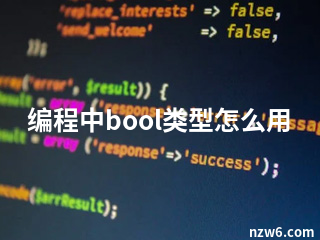在编程中,bool 类型用于表示布尔值,即逻辑上的真(True)或假(False)。它通常用于条件判断和控制程序的流程。以下是一些关于如何在编程中使用 bool 类型的常见用法和示例,主要以 Python 为例,但概念在其他编程语言中(如 C++、Java、JavaScript 等)也是类似的。
基本用法
-
声明布尔变量:
is_raining = True is_sunny = False -
条件判断:
布尔值通常用于if、elif和else语句中,以决定程序的执行路径。if is_raining: print("It's raining. Take an umbrella!") else: print("It's not raining. Enjoy your day!") -
逻辑运算:
你可以使用逻辑运算符(如and、or、not)来组合多个布尔值。
```python
isweekend = False
havefree_time = Trueif isweekend or havefree_time:
print("You can relax!")
else:
print("You're busy.")
``` -
比较运算:
比较操作(如==、!=、<、>、<=、>=)的结果也是布尔值。age = 20 if age >= 18: print("You are an adult.") else: print("You are a minor.") -
在函数中使用:
布尔值可以作为函数的返回值,表示某种状态或结果。
```python
def is_even(number):
return number % 2 == 0num = 4
if is_even(num):
print(f"{num} is even.")
else:
print(f"{num} is odd.")
```
其他语言中的 bool 类型
-
C++:
bool isReady = true; if (isReady) { std::cout << "Ready to go!" << std::endl; } -
Java:
boolean isReady = true; if (isReady) { System.out.println("Ready to go!"); } -
JavaScript:
let isReady = true; if (isReady) { console.log("Ready to go!"); }
注意事项
- 布尔值在条件判断中非常有用,因为它们可以直接用于控制流程。
- 在某些语言中(如 Python),非零数值、非空字符串、非空列表等在某些上下文中会被视为
True,而零、空字符串、空列表等会被视为False。 - 使用布尔值时,要确保逻辑清晰,避免复杂的嵌套条件,以提高代码的可读性。
通过合理使用 bool 类型,你可以编写出更加清晰、简洁和易于维护的代码。







